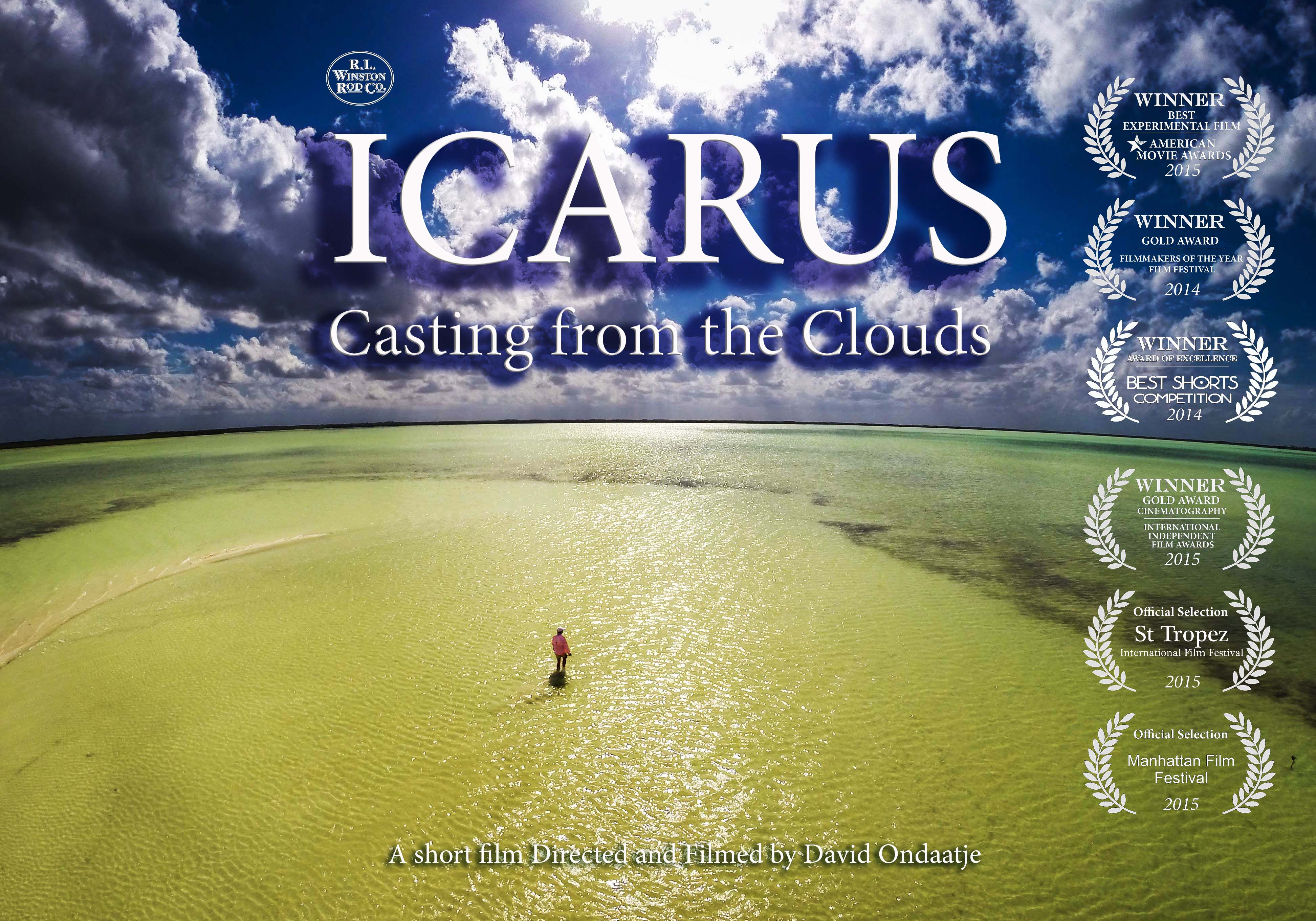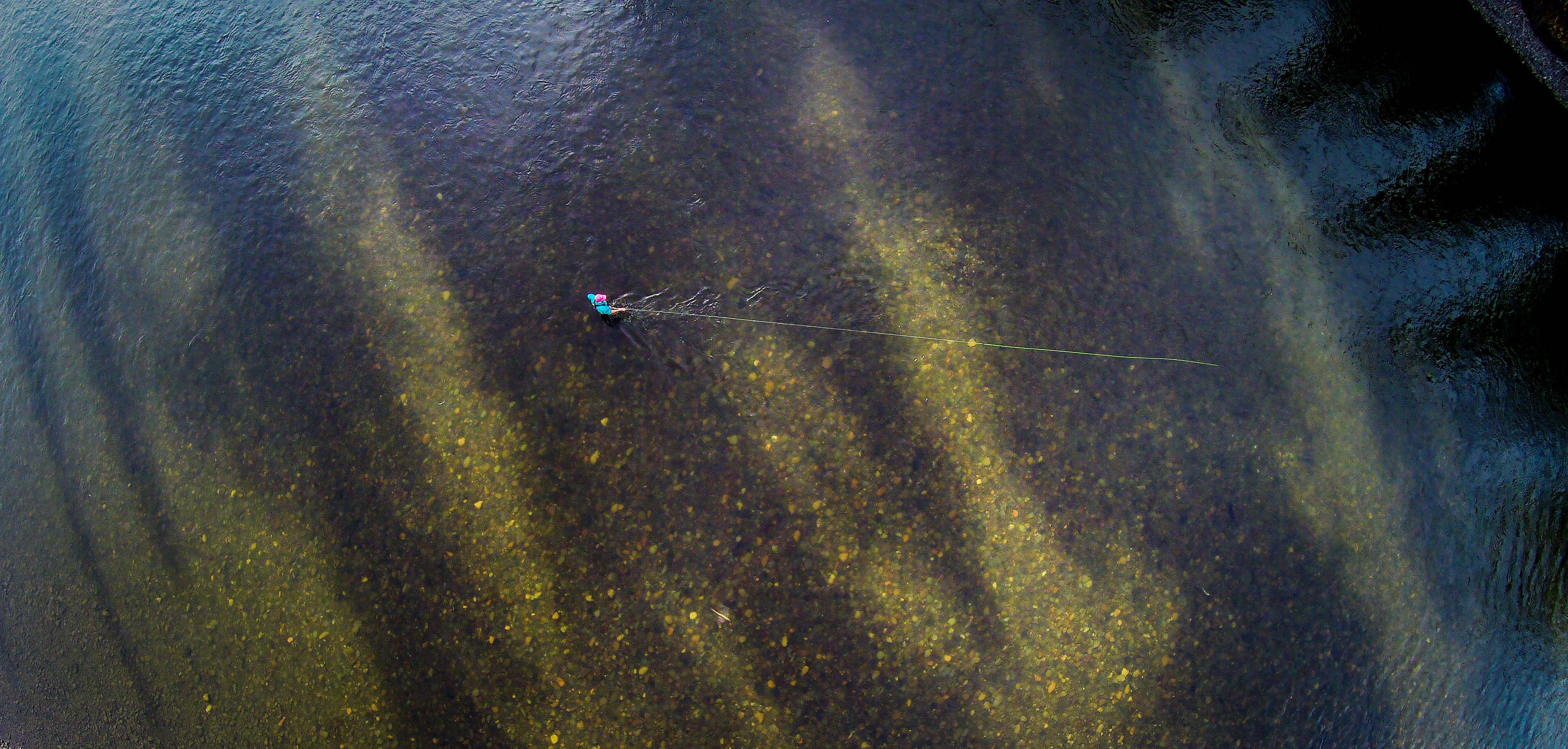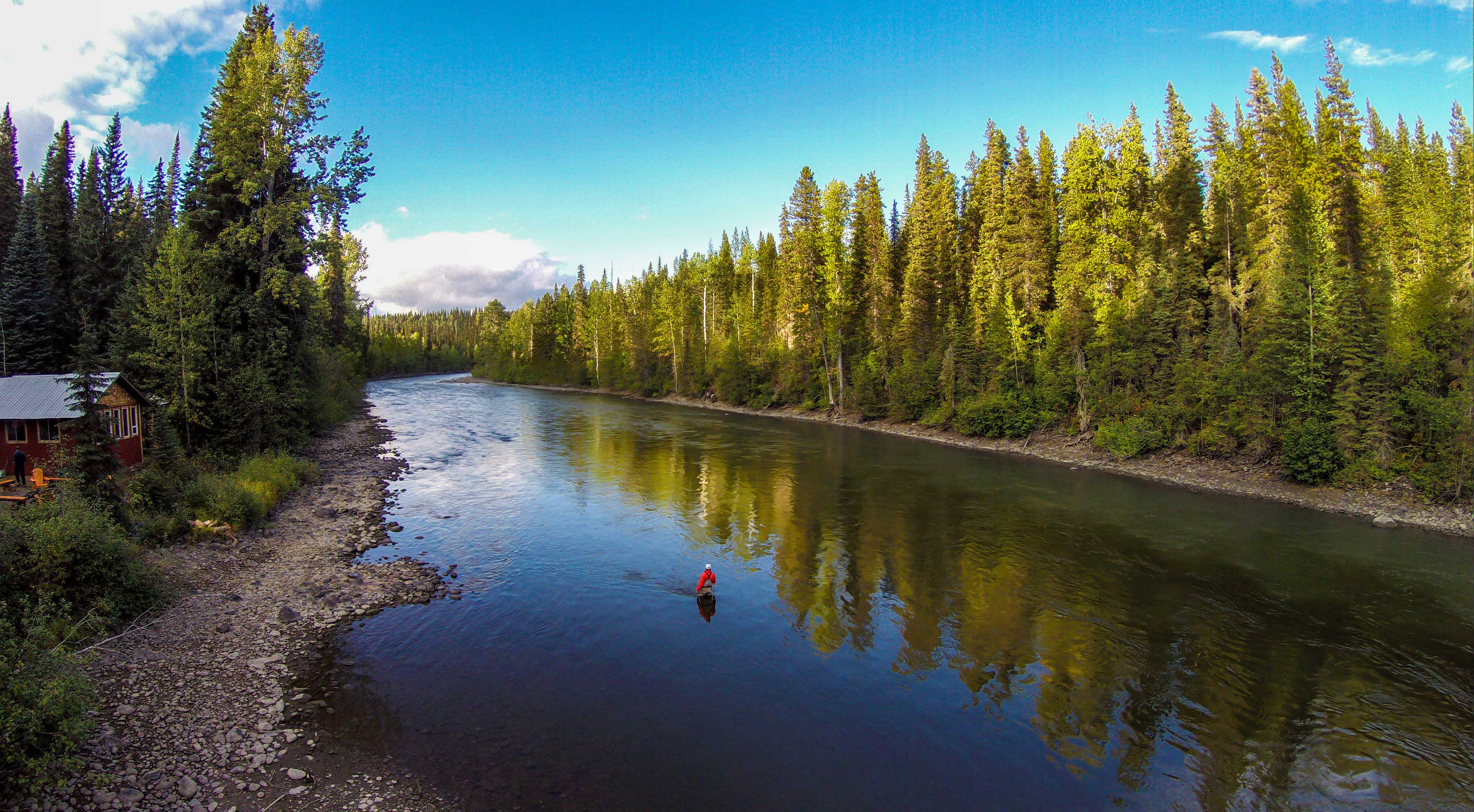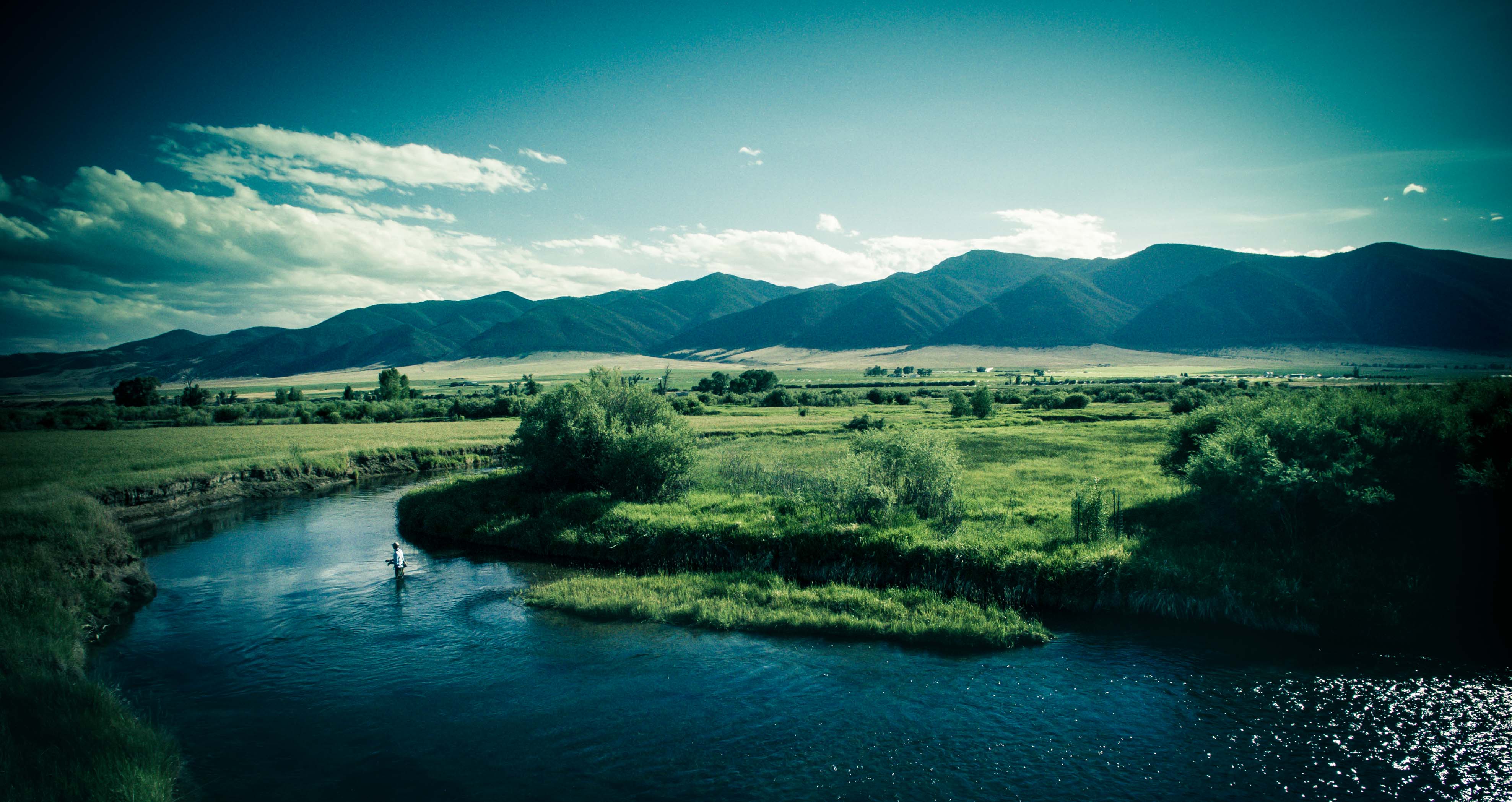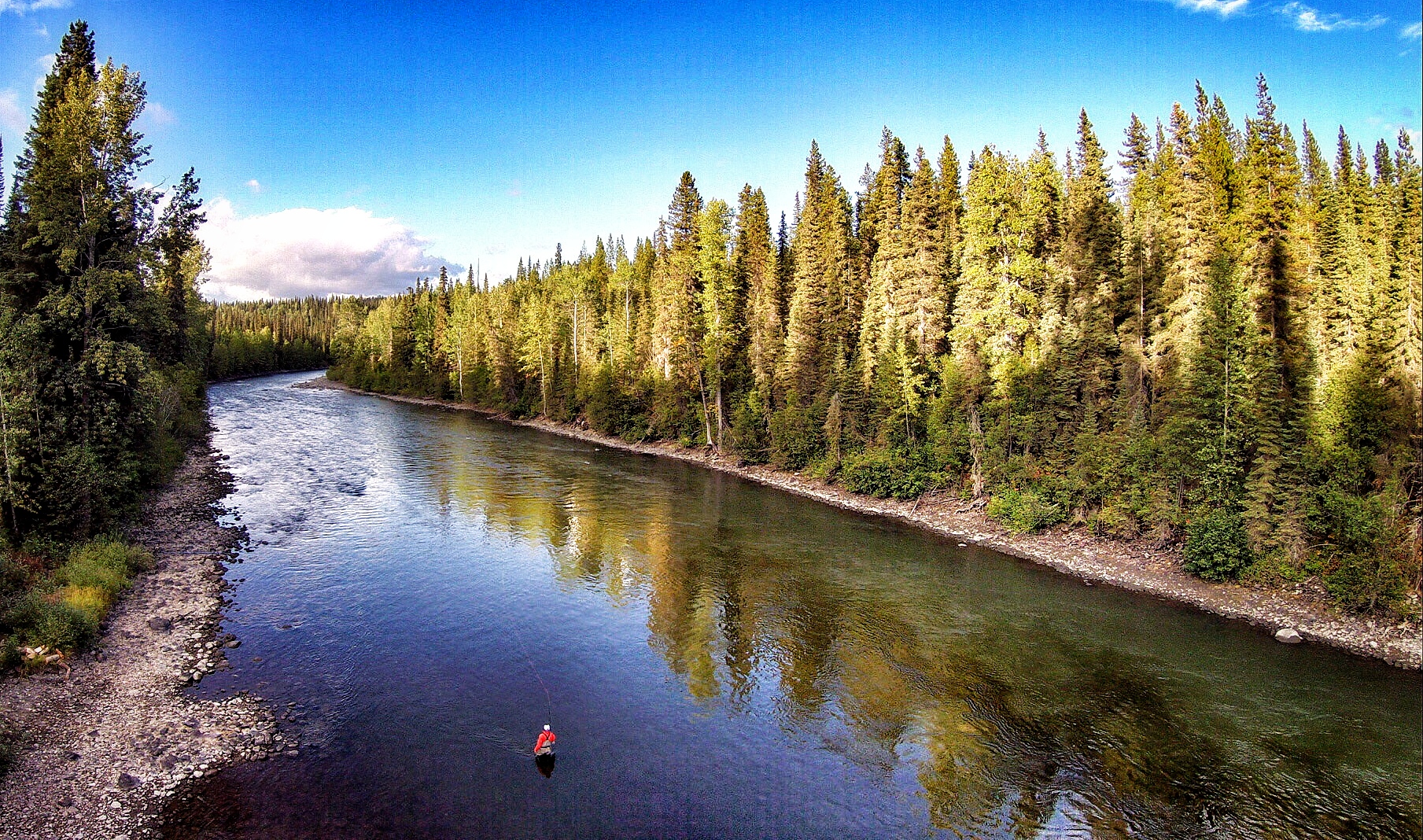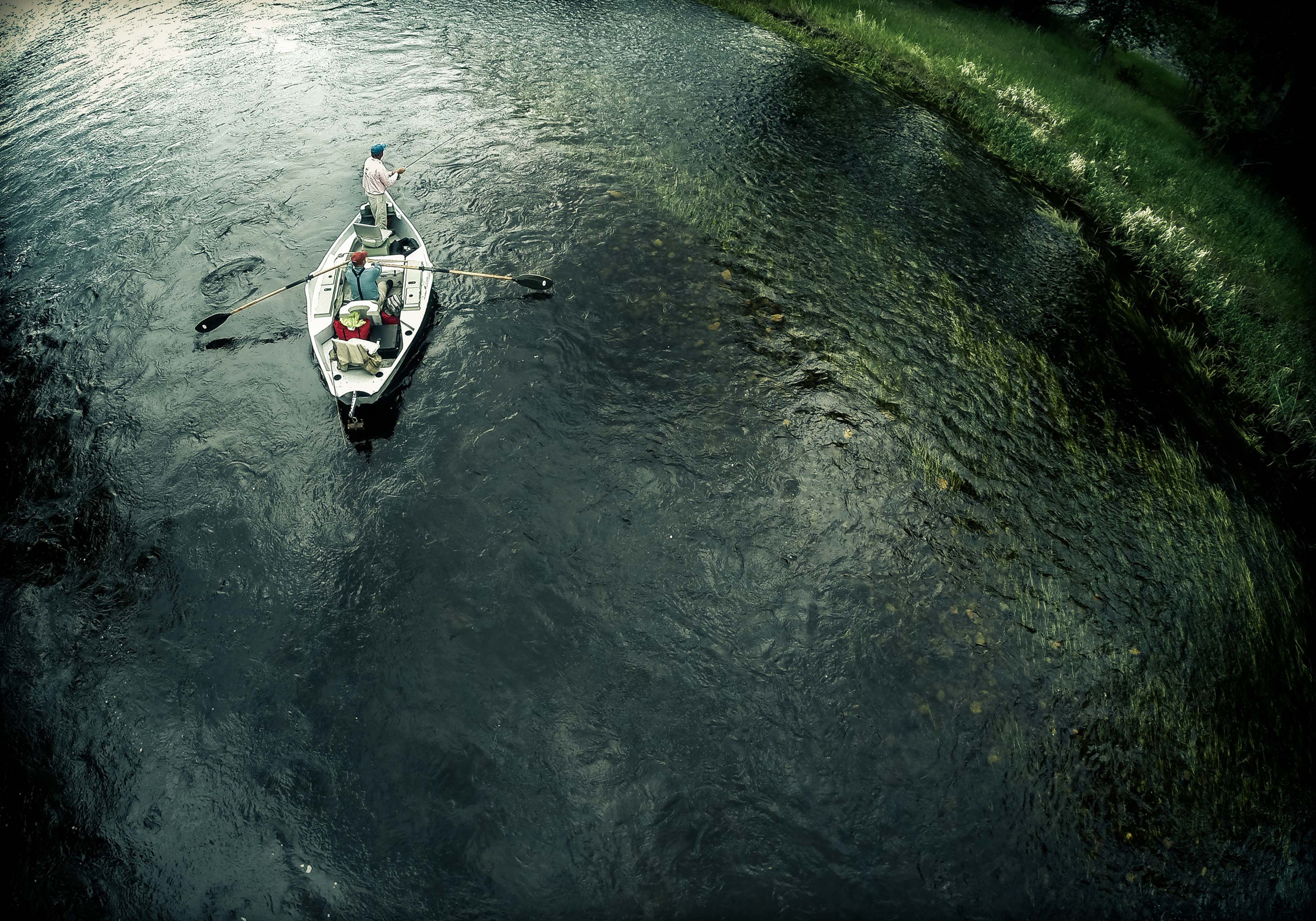Q: As an angler and photographer, what was your initial draw to begin flying and utilizing a multi-rotor drone for your photography work?
A: I love fly fishing. It occupies virtually every part of my personal life and my professional life. I also can’t imagine ever going fishing without a camera. It’s my way of sharing my passion for Winston and for fly fishing with others – especially when visiting a place for the first time. Aerial photography offers the opportunity explore the world from a new vantage point, so naturally I was drawn to it right away. In fact, that’s the main idea behind my latest film, Icarus. Like the Greek myth, the film Icarus is about a new freedom in flying (and filming with a quadcopter). And, like Icarus, I was overwhelmed by the beauty of things I saw from this new point of view, and ultimately undone by foolishness and inexperience. My wax wings soon melted and down it all came.
Near Smithers, British Columbia
Q: We all know these systems don’t fly themselves, so what was the most challenging aspect of learning to use one of these aerial photo & video tools?
A: Learning to fly the quadcopter was my single biggest challenge. I am not that competent with video game controllers, so it probably took me a little longer than someone who has grown up playing a lot of video games.
Over a year ago, I bought a used basic model Phantom 1 online without a camera or gimbal. As soon as it arrived, I unboxed it and turned it on. It immediately crashed and flipped it over with the props still spinning. It didn’t come with instructions, so I didn’t know how to turn it off. I quickly searched the web under “how to turn off Phantom I,” and eventually found a video explaining how to turn it off. For the next few few hours, I watched whatever I could find online on how to fly these things before gathering up the courage to try again. The next time it flew a few feet and crashed again. I repeated this cycle of crashing and watching until I finally got the hang of it. And I crashed it every time the next dozen or so flights and during every other flight after that for the next several months as I slowly gained confidence. If you had told me then how proficient I would become flying these things, I would never have believed you. Have faith. It gets better.
Petit Lake, Idaho
A: When you are setting up a flight, and thinking about capturing an aerialshot, what factors are you concerned with, and how do you plan the shot?
Q: We shoot all Winston’s still and video images ‘in situation’ which means there are no set-ups – we only shoot what is actually happening. Consequently, there is usually very little time to prepare a shot. And, as a fanatical angler unwilling to miss out on the fishing, I quite often have to put my rod on the riverbank and run to grab my gear to start filming when a friend hooks up or if the light and/or setting suddenly look fantastic – leaving even less time to prepare. Once the quadcopter is airborne, however, there are a few things I take into consideration.
First, the direction and quality of light is very important. As with most photography, contrasts are more pronounced with good early morning and late afternoon light -which makes everything look fantastic. Muted, light on overcast days or just after the sun goes down, however, allows more gradation in the dark tones and can give you extraordinarily beautiful shots on the ground or from the air. It is worth noting that while the cameras used with newer quadcopters are very good, they are still a few generations behind top SLRs and have a difficult time handling a broad range of tones. It is very difficult to accurately capture very bright sections of an image along with very dark sections. To avoid blowing out the white areas, you will need to stop down, yet that leads the dark areas to become too dark. Something has to give. For this reason, it’s usually safer to shoot in the same direction the sun is shining. And while you might think the mid-day overhead sun is not a great time to film, with an aerial camera it can be the ideal time when aiming down onto a river or saltwater flat from above since the overhead sun illuminates everything.
Second, I like to encourage those with whom I fish to wear colorful clothing so I can see them from far away. I love the new Patagonia puff jackets when fishing for steelhead in British Columbia, for example.
Near Smithers, British Columbia
Q: If you had it all to do over again, what would you have done differently during your learning process with your drone?
A: I’m not sure that I would do anything differently. I was incredibly lucky to learn the way I did. I learned to fly the quadcopter first and how to film with it after that. I became an experienced pilot by trial and error. Thank goodness my early model Phantom 1 was indestructible while I learned to fly. I need to be much more careful now as the Phantom 3 is more fragile. I also didn’t use a video monitor for the first year and that really helped develop my flying skills. The new consumer quadcopters allow you to watch what you are filming live which is great for filming, but not so great for flying. For the first year or so, I flew only looking at the quadcopter – the quadcopter moves were my camera moves. Now, I use a live video feed, so I tend to look at the monitor more than I should. You need to remember that when using the monitor, you are ¾ blind; you can only see in one direction. When looking at the monitor, you can only see where the camera is pointed and are blind in all other directions: up, down, sideways, back. However, when you fly while looking at the quadcopter, you can see what hazards exist in every direction. That’s much safer.
Ruby River, Montana
Q: If you can make a suggestion to aspiring aerial photographers who are thinking about their first drone system, what would it be?
A: Flying advice – Be safe. Don’t ever fly it out of sight, in restricted areas or near people. Practice in big open spaces away from other people and learn to fly before you start filming. I recently tried one of the new mini drones (without GPS) and it was a lot of fun. I can see how starting with an inexpensive mini drone without a camera would be a great way to learn because you need to focus on the flying. The camera is a huge distraction to the flying. I would think that if you were able to master flying a mini drone, you would be much better with a larger quadcopter.
It takes time to get the hang of flying a quadcopter in every direction. When it is pointed toward you, for example, moving it forward is intuitively different than when it is pointed away from you. This might sound overly simplistic, but it is perhaps the biggest challenge in flying well. You always run into unexpected situations, so the better you are at the controls the safer it will be for you and others – and longer your quad will survive. After a flyaway and several crashes, a friend gave me some good advice: he said he only ever crashes when he gets comfortable – because that’s when he tries to do more than he should. The quadcopter is too far away, too high, or too close to the trees, etc. Stay in control and you will get hours of beautiful footage. Go for too much and your odds of the quadcopter surviving drop accordingly. Given the fragility of the quads now, I suggest taking small steps to start. Don’t go too high or ever fly it out of line of sight. Even if you can still see the quad in the distance and see what it is being filmed on the monitor, when it is far away it is very difficult to know the direction it is pointed – which makes it almost impossible to control. Keep it close.
Near Smithers, British Columbia
Filming advice – The best advice I can offer when filming is to avoid turning the quadcopter side to side. Single moves work best. It is extremely difficult to pull off a turn shot while filming. Other moves can be combined: forward and up, back and up, forward and down, etc. I can’t tell you the number of great shots I’ve ruined because I thought I should turn the quad ever so slightly to point it a little more directly at the subject – end of usable shot. If you watch Icarus, there are virtually no turn shots. In general, to get an interesting shot in the air, it’s not much different from getting a good shot on the ground: you shouldn’t abruptly change camera position or exposure mid shot. Long, smooth moves will give you nice material you can work with when editing. Better to go a little longer in slightly the wrong direction than ruin a shot with a minor shift. Having something in foreground and background during a move also creates a nice effect. Filming close to the ground or water also creates a nice motion effect. But be careful. There’s no need to go too fast as the sense of motion is already exaggerated. I love slow motion – it is very dramatic and can forgive camera moves that aren’t as smooth as they should be. Also, I like to film flying backwards. As the quad angles back, the props are kept out of the shot – versus moving forward when quad props appear and need to be edited out later. Most importantly, be responsible and have fun. It’s a new beautiful world from up there.
Big Hole River, Montana

